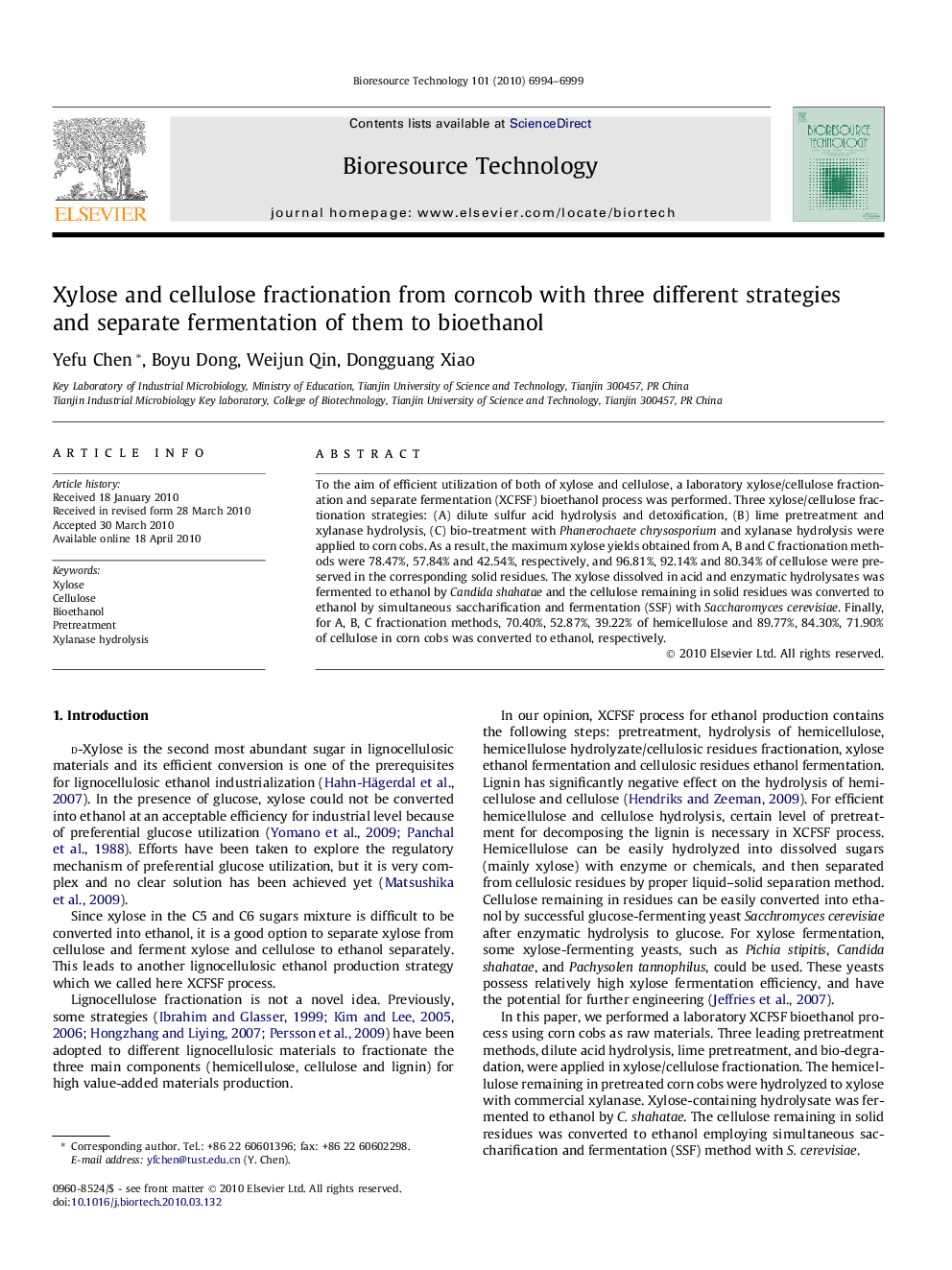| Article ID | Journal | Published Year | Pages | File Type |
|---|---|---|---|---|
| 682094 | Bioresource Technology | 2010 | 6 Pages |
To the aim of efficient utilization of both of xylose and cellulose, a laboratory xylose/cellulose fractionation and separate fermentation (XCFSF) bioethanol process was performed. Three xylose/cellulose fractionation strategies: (A) dilute sulfur acid hydrolysis and detoxification, (B) lime pretreatment and xylanase hydrolysis, (C) bio-treatment with Phanerochaete chrysosporium and xylanase hydrolysis were applied to corn cobs. As a result, the maximum xylose yields obtained from A, B and C fractionation methods were 78.47%, 57.84% and 42.54%, respectively, and 96.81%, 92.14% and 80.34% of cellulose were preserved in the corresponding solid residues. The xylose dissolved in acid and enzymatic hydrolysates was fermented to ethanol by Candida shahatae and the cellulose remaining in solid residues was converted to ethanol by simultaneous saccharification and fermentation (SSF) with Saccharomyces cerevisiae. Finally, for A, B, C fractionation methods, 70.40%, 52.87%, 39.22% of hemicellulose and 89.77%, 84.30%, 71.90% of cellulose in corn cobs was converted to ethanol, respectively.
